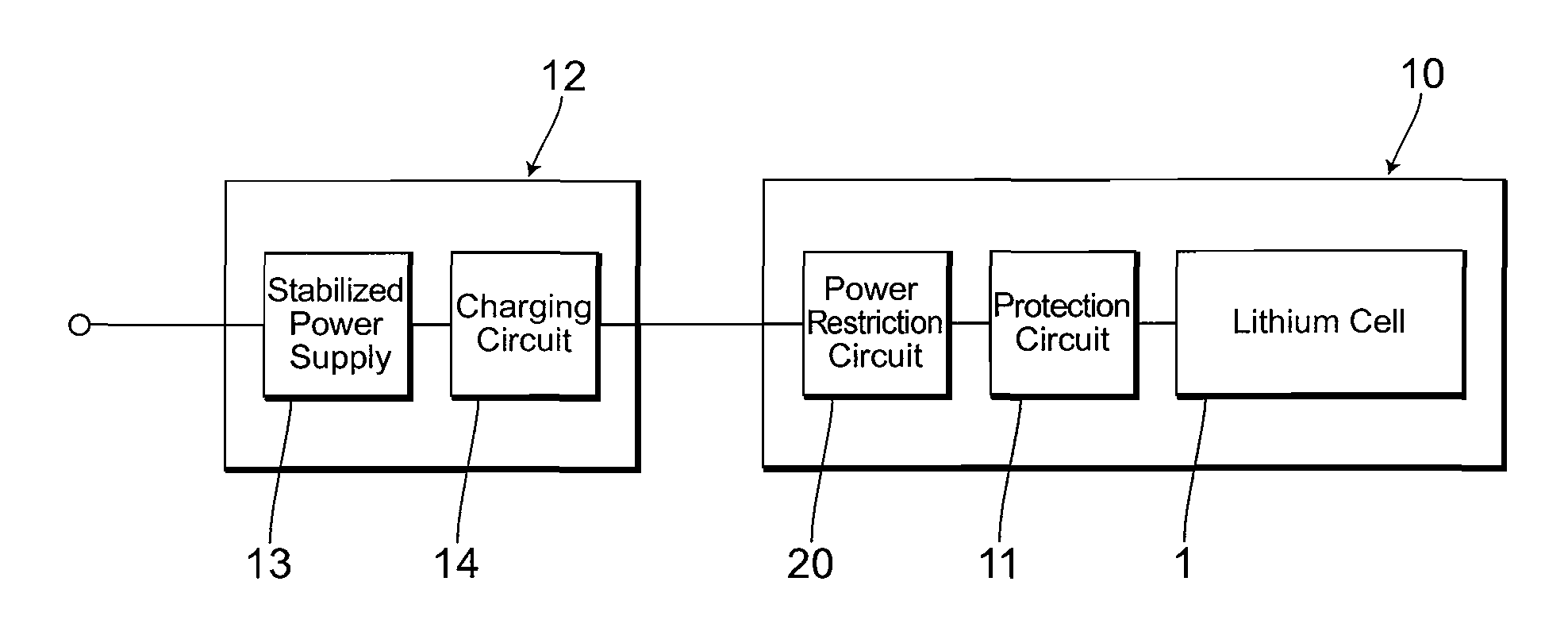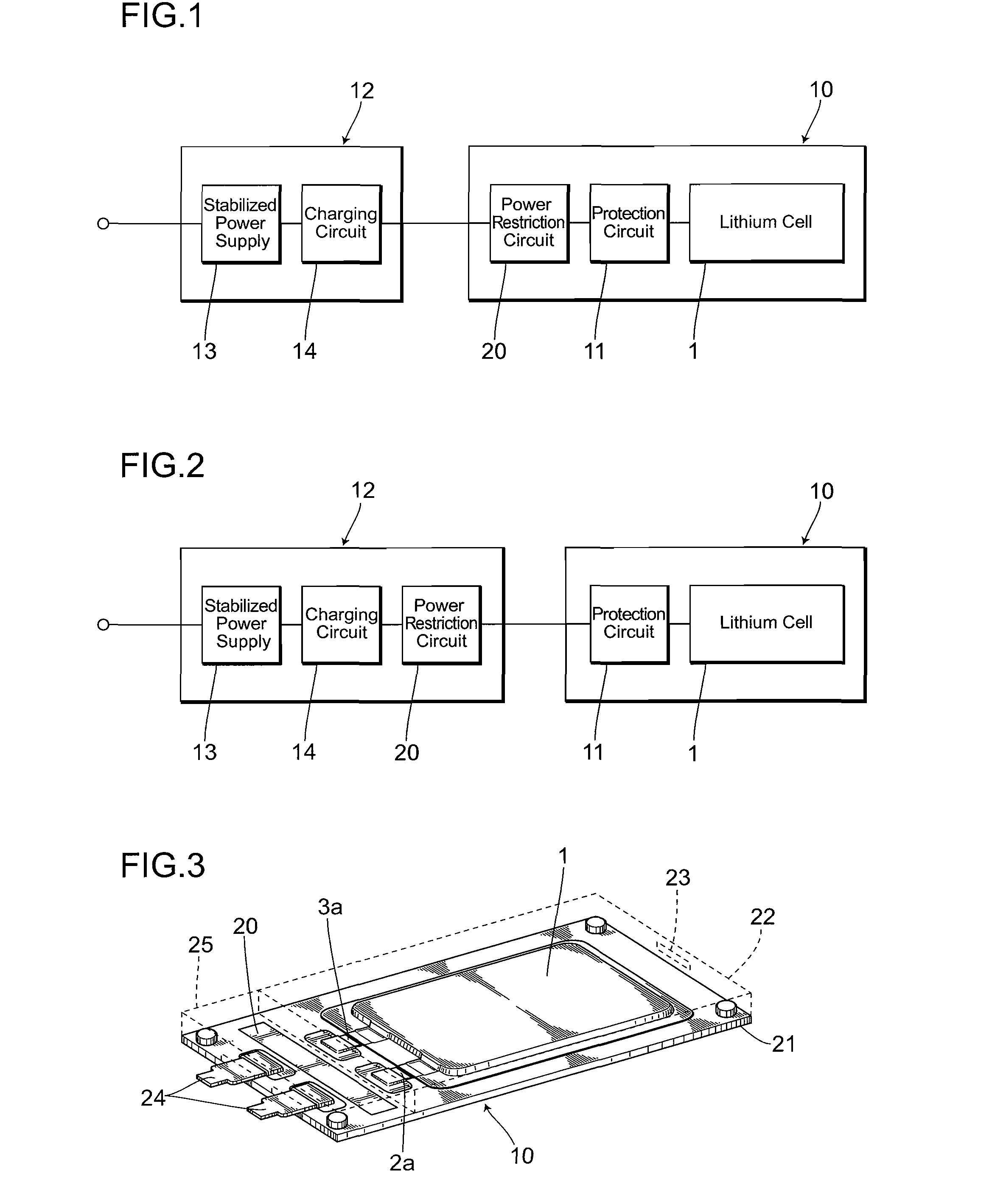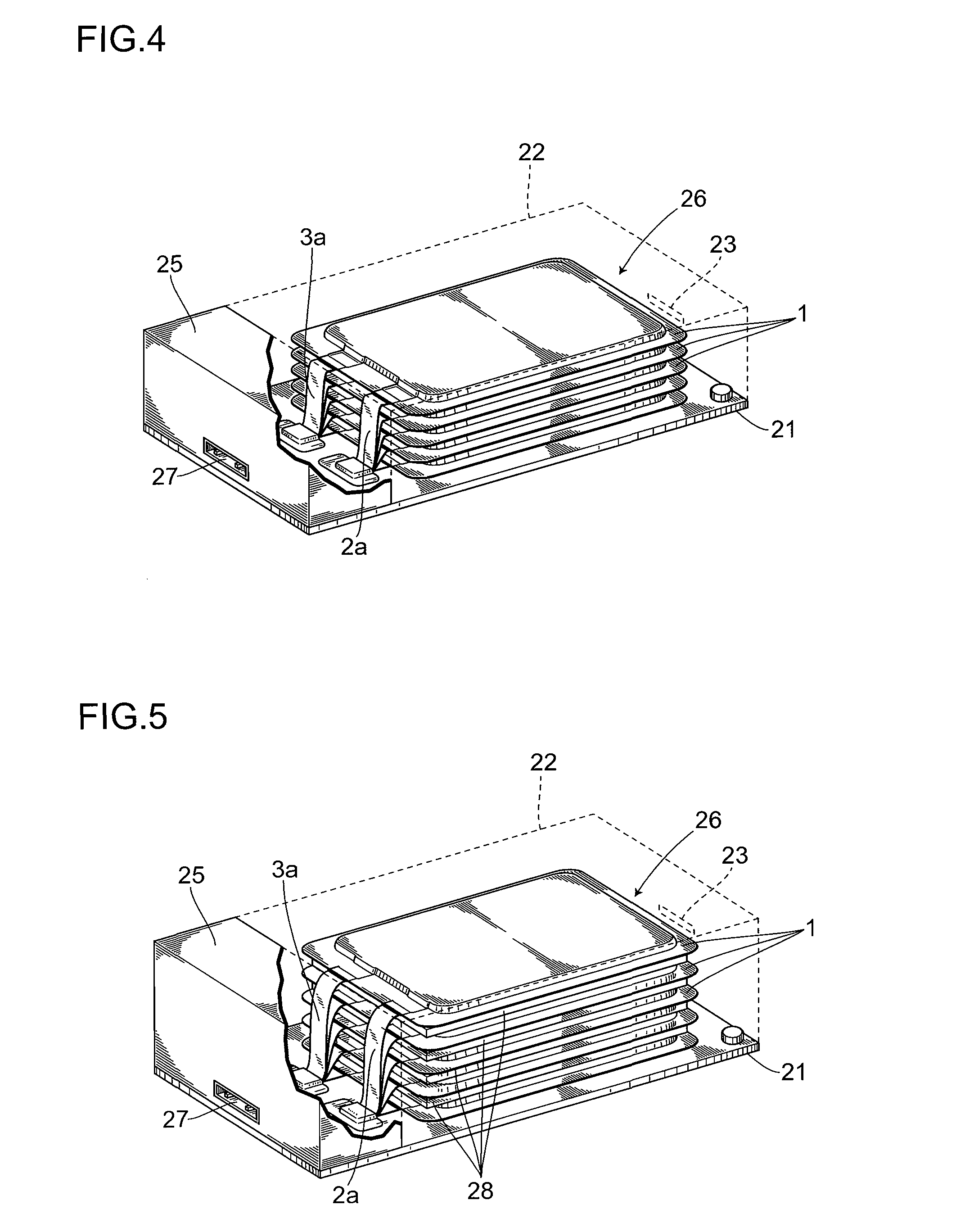Method and device for safety protection of secondary battery
a secondary battery and safety protection technology, applied in the direction of secondary battery servicing/maintenance, cell components, safety/protection circuits, etc., can solve the problems of shortened life of secondary batteries, increased and increased risk of secondary battery smoking and ignition, so as to prevent smoking and ignition of secondary batteries, and free from the risk of smoking and ignition
- Summary
- Abstract
- Description
- Claims
- Application Information
AI Technical Summary
Benefits of technology
Problems solved by technology
Method used
Image
Examples
embodiment 1
[0061]The invention in an embodiment 1 is realized by figuring out a mechanism in which a secondary battery such as, e.g., a lithium-ion battery or the like leads to giving rise to smoking and ignition and by discovering that an region of safe operation of the secondary battery, not giving rise to the smoking and the ignition, was determined not by a total energy amount (a charging power amount) that had been input to the secondary battery but by input energy (charging power Pc) that is an energy amount input per hour to the secondary battery and thereby the secondary battery is allowed to be safely used by controlling the input energy. Hitherto, the region of safe operation is unclear and hence the input energy input to the secondary battery depended on a battery charger. Therefore, some types of the battery charger were at risk for inputting the input energy larger than that of the region of safe operation to a battery pack. Since safety in the battery pack is secured only by the ...
embodiment 2
[0075]Next is a detailed description of a second embodiment with reference to the appended drawings. In addition, the same reference numerals are used for parts the same as in the conventional example and descriptions of common parts are omitted to avoid overlap as much as possible.
[0076]FIG. 11 is a block diagram representing an outline configuration in the case of mounting a device for safety protection of a secondary battery in the present embodiment on a lithium-ion battery 1. In the figure, as is the case with the conventional example, a battery charger 12 for inputting charging power to the lithium-ion battery 1 to charge the same is connected with the lithium-ion battery 1. Reference numeral 51 denotes a CPU corresponding to the safety protection device, e.g., a micro computer or the like, an electric power detector 52 with an input port connected to a connection line between the battery charger 12 and the lithium-ion battery 1, a computing unit 53 acting as a charging and di...
embodiment 3
[0085]Next is a detailed description of a third embodiment with reference to the appended drawings. In the meantime, the same reference numerals are used for parts the same as in the conventional example and descriptions of common parts are omitted to avoid overlap as much as possible.
[0086]First, before describing a charging method of a lithium-ion battery, a power supply unit incorporated with the lithium-ion battery is described as one example of the same. In addition, FIG. 13 is a block diagram representing a general configuration of a power supply unit (a UPS for AC) equipped with the lithium-ion battery.
[0087]The power supply unit 60 shown in FIG. 13 is equipped with each of constituents comprising a rectifier 74, an inverter 75, the lithium-ion battery 1, a charging control circuit 82 and a controller 85. An alternating-current output of the inverter 75 based on an alternating-current output of an alternating-current source 71 or a direct-current output of the lithium-ion bat...
PUM
 Login to View More
Login to View More Abstract
Description
Claims
Application Information
 Login to View More
Login to View More - R&D
- Intellectual Property
- Life Sciences
- Materials
- Tech Scout
- Unparalleled Data Quality
- Higher Quality Content
- 60% Fewer Hallucinations
Browse by: Latest US Patents, China's latest patents, Technical Efficacy Thesaurus, Application Domain, Technology Topic, Popular Technical Reports.
© 2025 PatSnap. All rights reserved.Legal|Privacy policy|Modern Slavery Act Transparency Statement|Sitemap|About US| Contact US: help@patsnap.com



